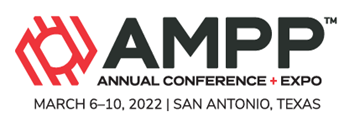Search
AMPP Conference Papers
View as
Sort by
Display
per page
Advanced Crack Inspection Technology for Coke Drums
Product Number:
51324-20850-SG
Publication Date:
2024
$40.00
Advanced Inspection Technologies for Determining the Extent of Corrosion Damage in Fixed Equipment
Product Number:
51323-19195-SG
Publication Date:
2023
$20.00
Advanced Materials For Condensing Heat Transfer
Product Number:
51322-17969-SG
Publication Date:
2022
$20.00
Advanced Subsea Corrosion Protection via Modulated Impressed Current Cathodic Protection a Prototype Demonstration and Comparative Evaluation
Product Number:
51324-20812-SG
Publication Date:
2024
$40.00
Advancement in Asset Integrity Management through Digitalized Eddy Current Testing Technology for Corrosion Cracking Inspections
Product Number:
51323-19049-SG
Publication Date:
2023
$20.00
Advancement of a Comprehensive Mechanistic CO2 Corrosion Model to Incorporate Simulated Hydrodynamics via a Turbulent Flow Model
Product Number:
51324-20657-SG
Publication Date:
2024
$40.00
Advancements in High-Performance Fiber-Reinforced Polymer Composites: Challenges, Investigations, Safety, and Applications in Structural Engineering.
Product Number:
MECC23-20115-SG
Publication Date:
2023
$20.00
Advances In Digital Twin And AI To Predict And Manage External Corrosion - A Smart Tool For Decision Makers
Product Number:
51322-17991-SG
Publication Date:
2022
$20.00
Advances In Digital Twin And AI To Predict And Manage External Corrosion - A Smart Tool For Decision Makers
Product Number:
51322-17992-SG
Publication Date:
2022
$20.00
Aerospace Coating Condition Evaluations for Atmospheric Corrosion via Impedance-Based Techniques
Product Number:
51323-19405-SG
Publication Date:
2023
$20.00
Aesthetic Issues With Spray-Applied Fluoropolymer Coating System
Product Number:
51322-17971-SG
Publication Date:
2022
$20.00
After 30 Years Of Duplex Stainless Steel Experience In Oil & Gas - Do We Still Face Challenges?
Product Number:
51322-17690-SG
Publication Date:
2022
$20.00












